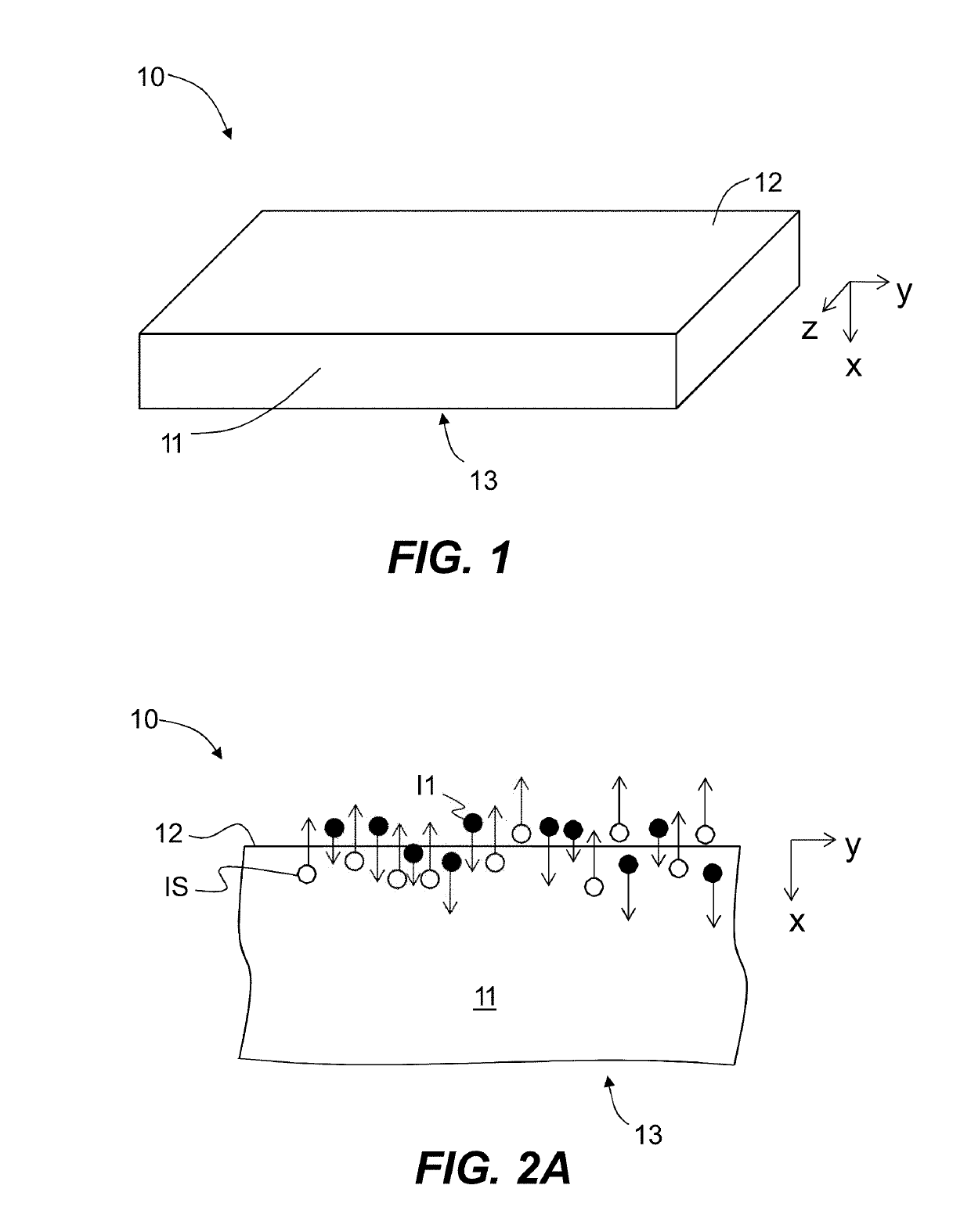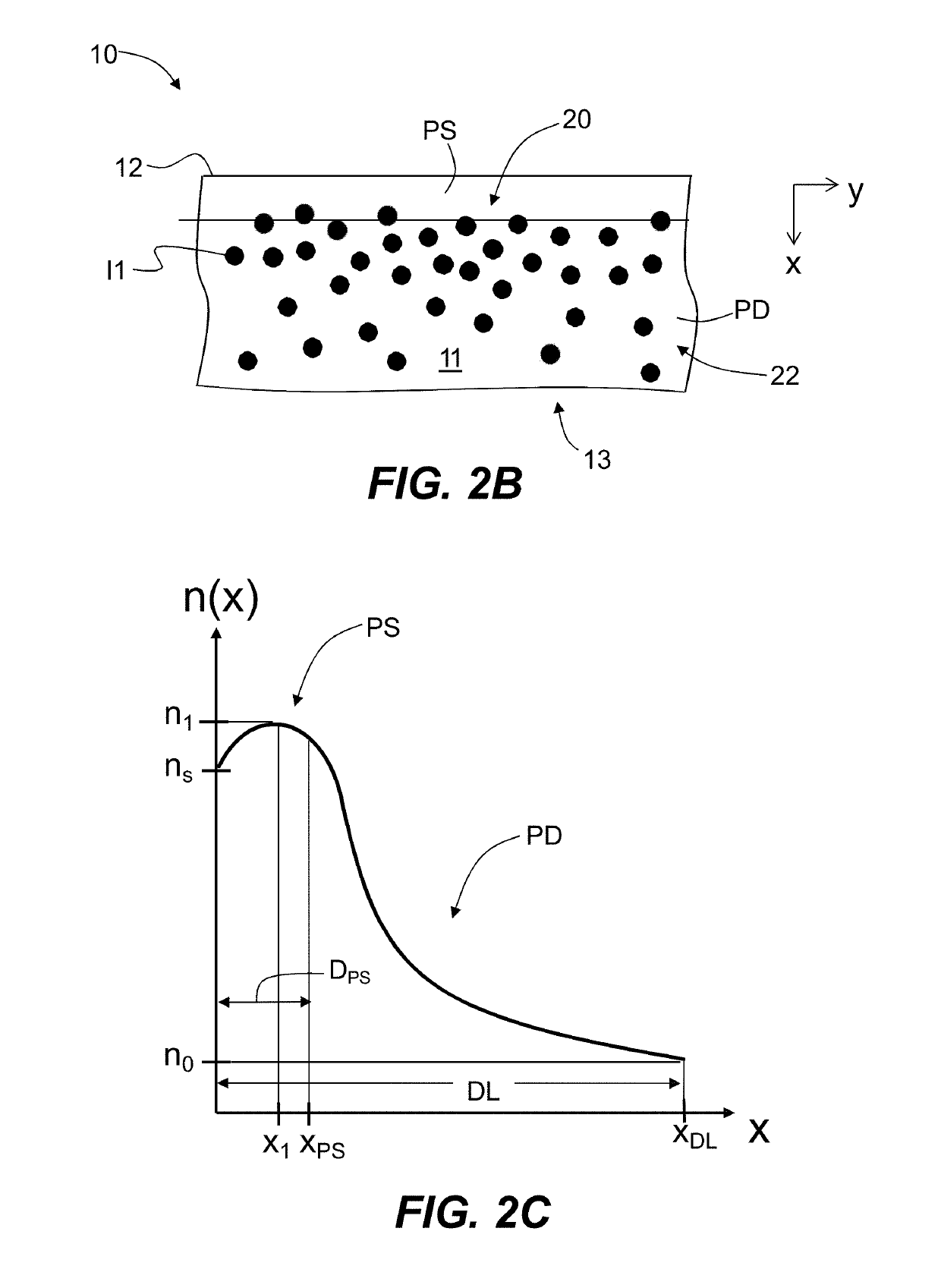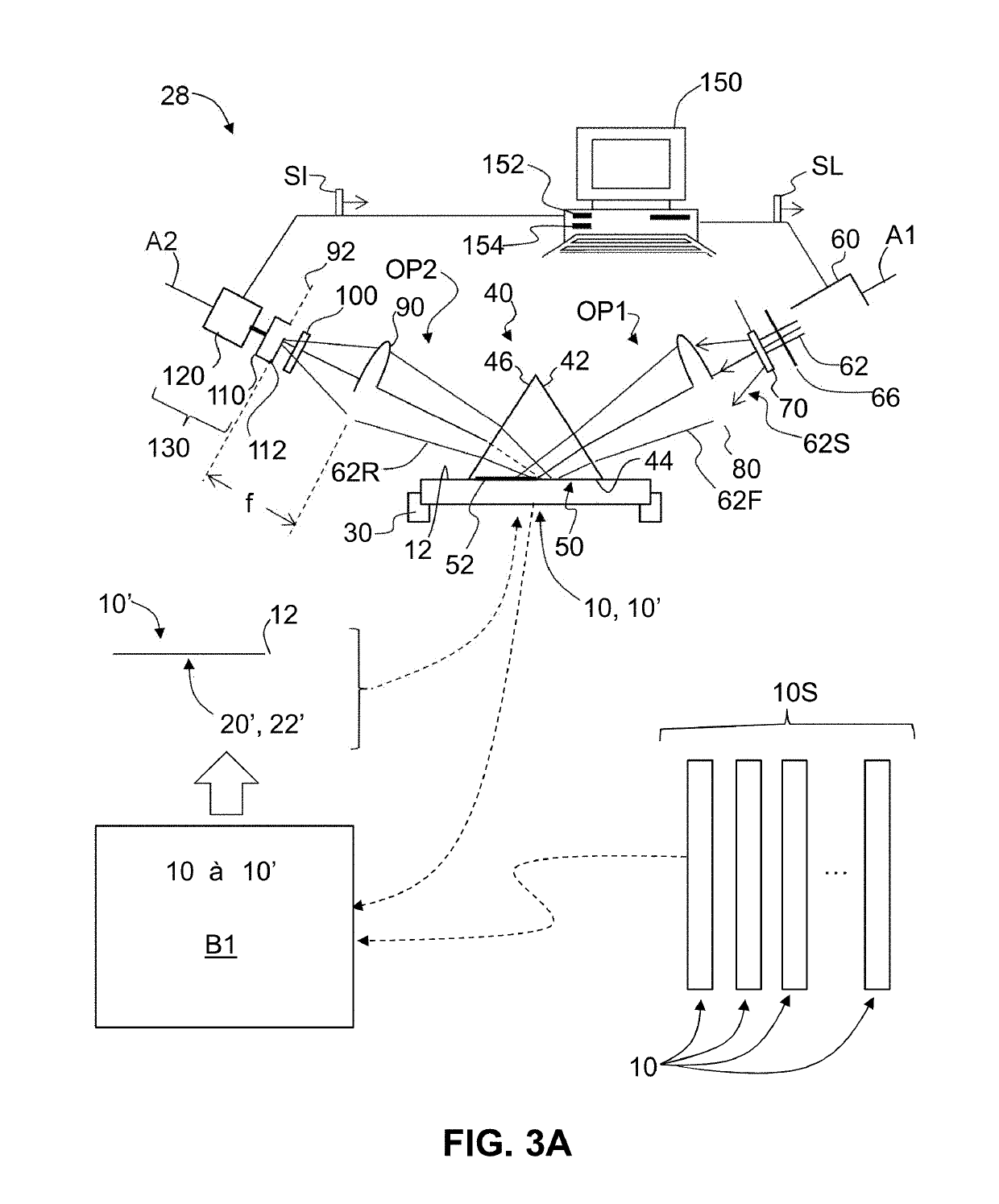Prism coupling methods of characterizing stress in glass-based ion-exchanged articles having problematic refractive index profiles
a technology of ion exchange and stress, applied in the field of ion exchanged glass-based (iox) articles, can solve problems such as problems such as problems such as no work, methods that do not work as well, and optical coupling to the iox waveguide is problemati
- Summary
- Abstract
- Description
- Claims
- Application Information
AI Technical Summary
Benefits of technology
Problems solved by technology
Method used
Image
Examples
Embodiment Construction
[0028]Reference is now made in detail to various embodiments of the disclosure, examples of which are illustrated in the accompanying drawings. Whenever possible, the same or like reference numbers and symbols are used throughout the drawings to refer to the same or like parts. The drawings are not necessarily to scale, and one skilled in the art will recognize where the drawings have been simplified to illustrate the key aspects of the disclosure.
[0029]The acronym IOX can mean either “ion exchange” or “ion exchanged,” depending on the context of the discussion.
[0030]The term “glass based” is used herein to describe a material, article, matrix, substrate, etc., means that the material, article, matrix, material, substrate, etc. can comprise or consist of either a glass or a glass ceramic.
[0031]The compressive stress profile for an original IOX article is denoted CS(x) and is also referred to herein as just the stress profile. The surface compressive stress or just “surface stress” f...
PUM
| Property | Measurement | Unit |
|---|---|---|
| Thickness | aaaaa | aaaaa |
| Thickness | aaaaa | aaaaa |
| Depth | aaaaa | aaaaa |
Abstract
Description
Claims
Application Information
 Login to View More
Login to View More - R&D
- Intellectual Property
- Life Sciences
- Materials
- Tech Scout
- Unparalleled Data Quality
- Higher Quality Content
- 60% Fewer Hallucinations
Browse by: Latest US Patents, China's latest patents, Technical Efficacy Thesaurus, Application Domain, Technology Topic, Popular Technical Reports.
© 2025 PatSnap. All rights reserved.Legal|Privacy policy|Modern Slavery Act Transparency Statement|Sitemap|About US| Contact US: help@patsnap.com



